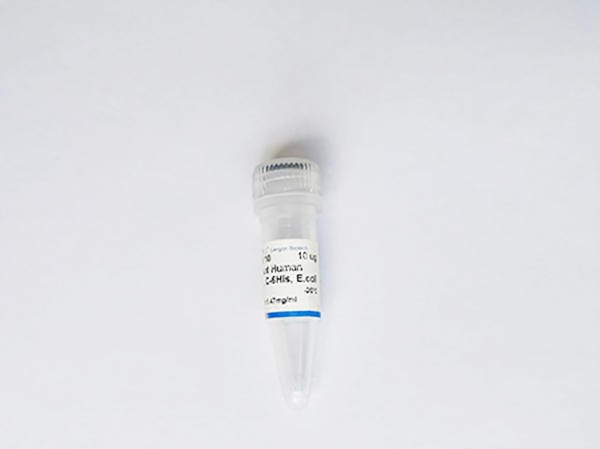概述
Recombinant Human Matrix Metalloproteinase-2 is produced by our Mammalian expression system and the target gene encoding Ala30-Cys660 is expressed with a 6His tag at the C-terminus.
使用说明
This material is offered by Sangon Biotech for research, laboratory or further evaluation purposes. NOT FOR HUMAN USE.
技术规格
| Tag | C-6His |
| 种属 | Human |
| 表达系统 | Human cells |
| Accession# | P08253 |
| Source | Human Cells |
| Formulation_Description | Lyophilized from a 0.2 μm filtered solution of 20mM TrisHCl, 150mM NaCl, pH 7.5. |
| Storage | Lyophilized protein should be stored at < -20°C, though stable at room temperature for 3 weeks.Reconstituted protein solution can be stored at 4-7°C for 2-7 days.Aliquots of reconstituted samples are stable at < -20°C for 3 months. |
| Reconstitution | Dissolve the lyophilized protein in distilled water. |
| Purity | Greater than 90% as determined by reducing SDS-PAGE. |
| Endotoxin | Less than 0.1 ng/μg (1 EU/μg) as determined by LAL test. |
| Background | 72 kDa type IV collagenase also known as matrix metalloproteinase-2 (MMP-2) and gelatinase A is an enzyme that in humans is encoded by the MMP2 gene.It belongs to the matrix metalloproteinase (MMP) family. Matrix metalloproteinases (MMPs) are a family of zinc-dependent endopeptidases that degrade components of the extracellular matrix (ECM) and play essential roles in various physiological processes such as morphogenesis, differentiation, angiogenesis and tissue remodeling, as well as pathological processes including inflammation, arthritis, cardiovascular diseases, pulmonary diseases and tumor invasion. MMP-2 is ubiquitinous metalloproteinase that is involved in diverse functions such as remodeling of the vasculature, angiogenesis, tissue repair, tumor invasion, inflammation, atherosclerotic plaque rupture, as well as degrading extracellular matrix proteins. MMP-2 can also act on several nonmatrix proteins such as big endothelial 1 and beta-type CGRP promoting vasoconstriction. MMP-2 cleaves KISS at a Gly-|-Leu bond and appears to have a role in myocardial cell death pathways. |











 党沛
党沛 





